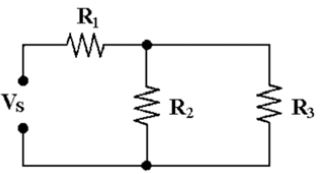True/False

-R₁ is in series with the parallel combination R₂ and R₃ in Figure 6-1.
Correct Answer:

Verified
Correct Answer:
Verified
Q4: <img src="https://d2lvgg3v3hfg70.cloudfront.net/TB8542/.jpg" alt=" -R₂ is in
Q5: <img src="https://d2lvgg3v3hfg70.cloudfront.net/TB8542/.jpg" alt=" -If all
Q7: <img src="https://d2lvgg3v3hfg70.cloudfront.net/TB8542/.jpg" alt=" -If
Q10: The difference between a balanced and an
Q11: One Ohmʹs law formula <img src="https://d2lvgg3v3hfg70.cloudfront.net/TB8542/.jpg" alt="One
Q12: <img src="https://d2lvgg3v3hfg70.cloudfront.net/TB8542/.jpg" alt=" -If every
Q14: <img src="https://d2lvgg3v3hfg70.cloudfront.net/TB8542/.jpg" alt=" -If
Q26: Theveninʹs theorem provides a method for:<br>A)designing complex
Q52: If two resistors are in parallel, they
Q59: In the series portion of series-parallel circuits,